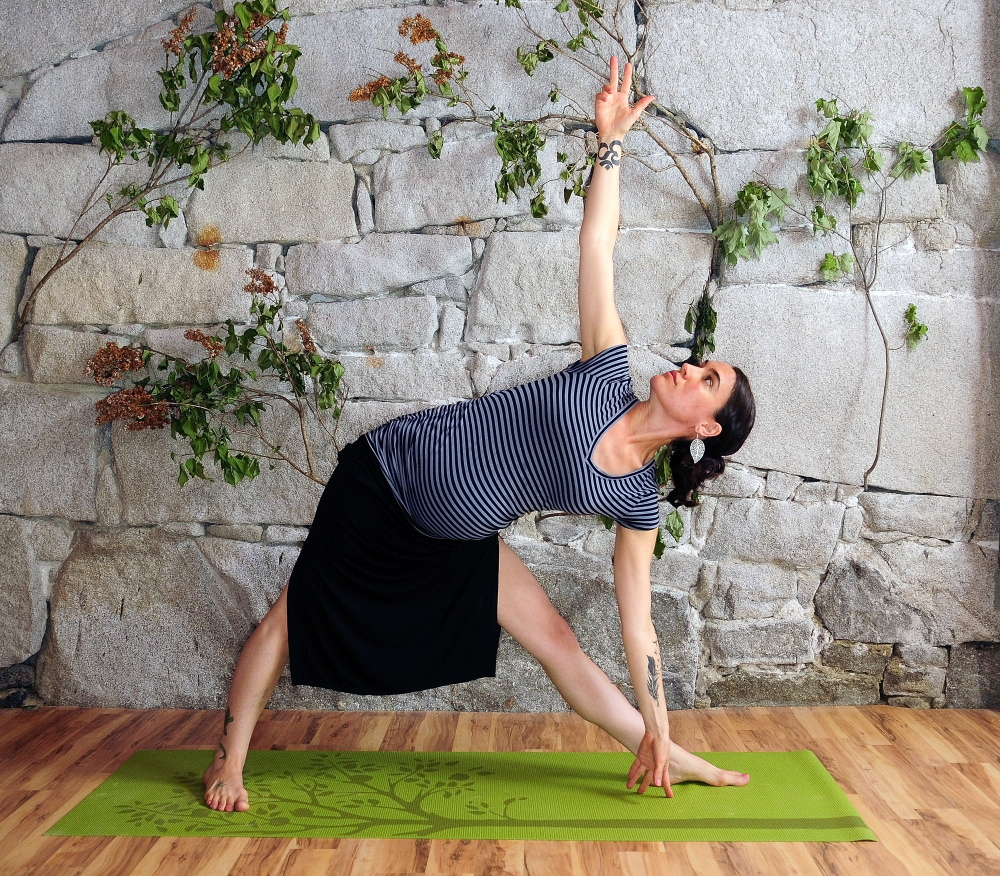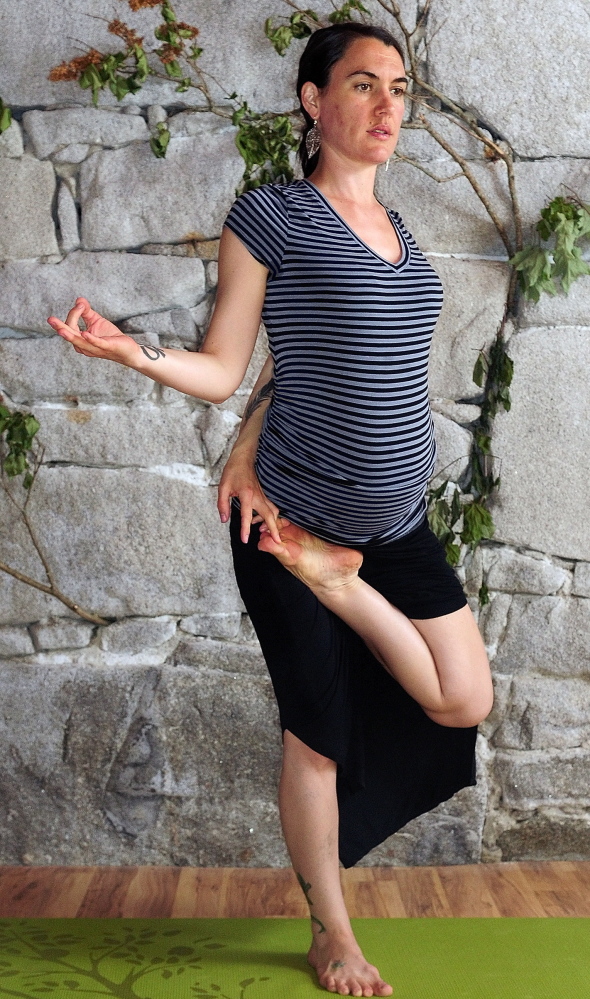HALLOWELL — The low point for Suzanne Imbruno Cobb came a few years ago when the Lyme disease she had battled for years left her nearly paralyzed by a dizzying array of symptoms, from crippling headaches to an inability at times to remember the names of her own family.
“Crippling body pain that would be so extreme some days that when it didn’t show up I found that I spent most of my pain-free hours worrying about when it might return,” Cobb said. “I was robbed of the joy that I should have had raising my child.”
That child, 7-year-old Lorenzo, now happily crafts new drawings for the yoga studio Cobb and her husband, Justin Cobb, will open next month on Second Street. Suzanne Cobb said the studio is about more than just yoga; it’s about helping people suffering from chronic illness like her find the path back to a happy life.
“I felt like I was taken down for a reason, so that I could heal myself and help people heal themselves,” Cobb said. “It’s more of a wellness center.”
Maine is one of 13 states affected by Lyme disease in an area that generally spans from Delaware up the East Coast and in two Great Lakes states, said Dr. Sheila Pinette, director of the Maine Center for Disease Control and Prevention. There were 1,376 reported cases of Lyme disease in Maine in 2013, although the state believes there are many cases that don’t get reported. Pinette said there are no studies that show whether yoga or other types of alternative treatments are effective in treating Lyme disease, but she wouldn’t rule them out if individual patients find them effective.
“As a physician, if there are alternative therapies, it should be considered,” she said.
Traditional treatment for Lyme disease is a course of antibiotics, which is effective if the disease is caught within 30 days. If it is not caught early, IV antibiotics are needed, she said.
Some people – but not all – get the telltale bull’s-eye rash. Other symptoms include fever, headache, and joint or muscle pain, Pinette said. Children under age 15 are at high risk because they spend a lot of time outside, as are men over 45 who favor outdoor activities.
“Parents have to be vigilant about checking children,” she said.
FLU-LIKE SYMPTOMS
Cobb, 36, has been interested in alternative health for most her life. That journey led to her first experience with yoga about 15 years ago. A bartender at the time, Cobb said she was searching for something to calm her frequent anxiety.
“I wanted to find something that could release me besides alcohol,” she said.
Cobb has earned several certifications, including Hatha Yoga basic, chair and kids yoga and continued her studies at Well Heart Yoga School in southern Maine. She opened Panacea Yoga Studios in her hometown of Winthrop in 2011.
Cobb said her experience with Lyme disease and her fight to regain her health through yoga and alternative medicine make Panacea more than just another yoga studio.
“My story is a little bit different because I almost died from Lyme disease,” she said. “I”ll offer the same thing as other yoga studios, but my experience is different.”
Cobb was diagnosed with Lyme disease in 2007 after experiencing potent and persistent flu-like symptoms.
Justin Cobb, who has received training in Lyme disease symptoms as part of his work for a pesticide company, believed his wife was suffering from the disease.
In desperation, Suzanne Cobb called disease control center officials, who suggested she seek a doctor well-versed in Lyme disease and its treatment. Cobb found such a physician in southern Maine, who diagnosed the Lyme disease based on Cobb’s symptoms.
The doctor suggested a combination of traditional and nontraditional treatments. Lyme disease is an inflammation, Cobb said, so she sought out herbs and food to counteract that process.
“I tried to take things that were anti-inflammatory and that kept my symptoms at bay,” Cobb said. “The yoga and the food were the cure.”
Cobb is pursuing herbalist certification after studying the effects of herbs.
“It was like going to school for eight years,” she said. “I feel like I have a doctorate in chronic illness and Lyme.”
Send questions/comments to the editors.



